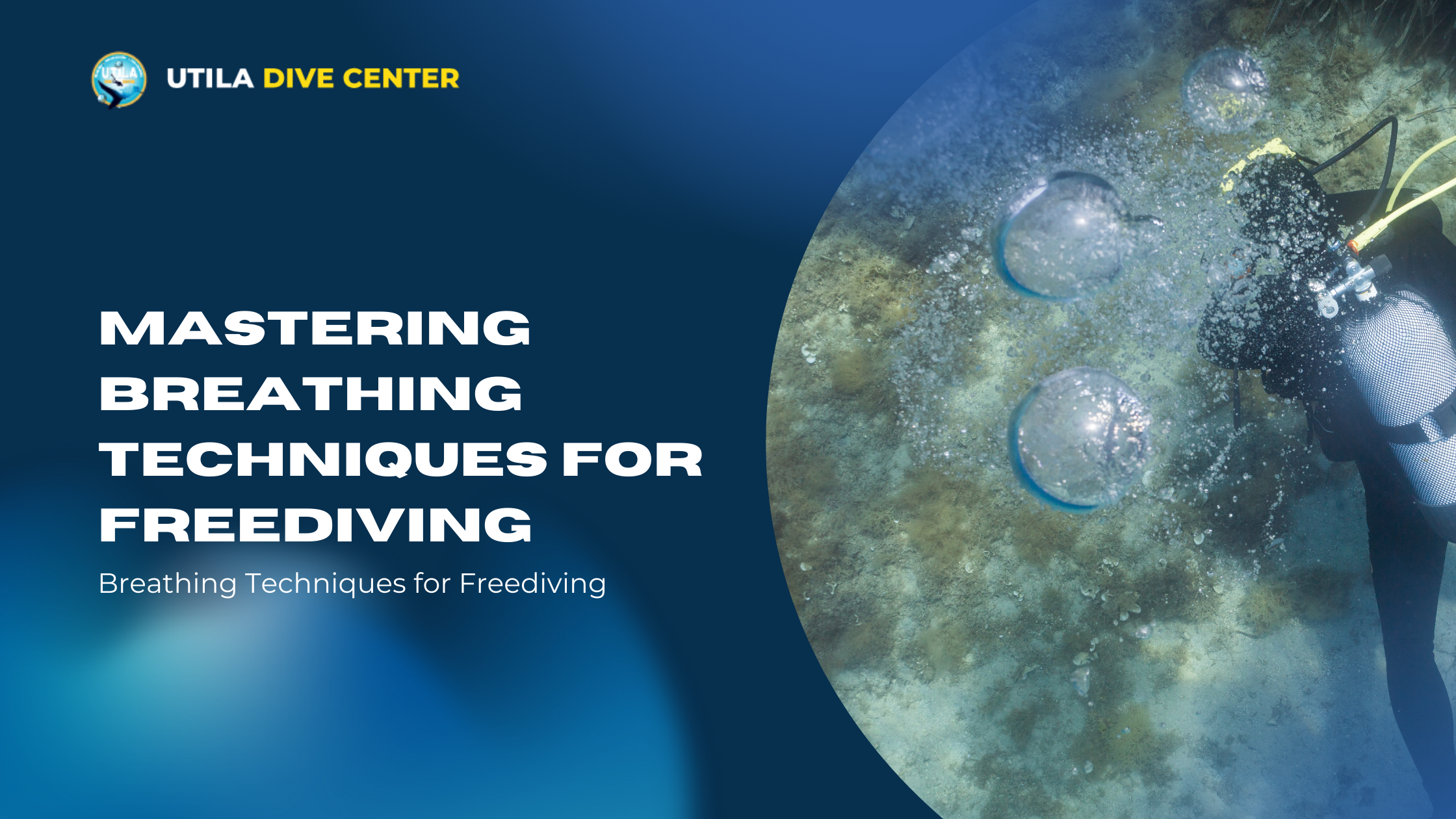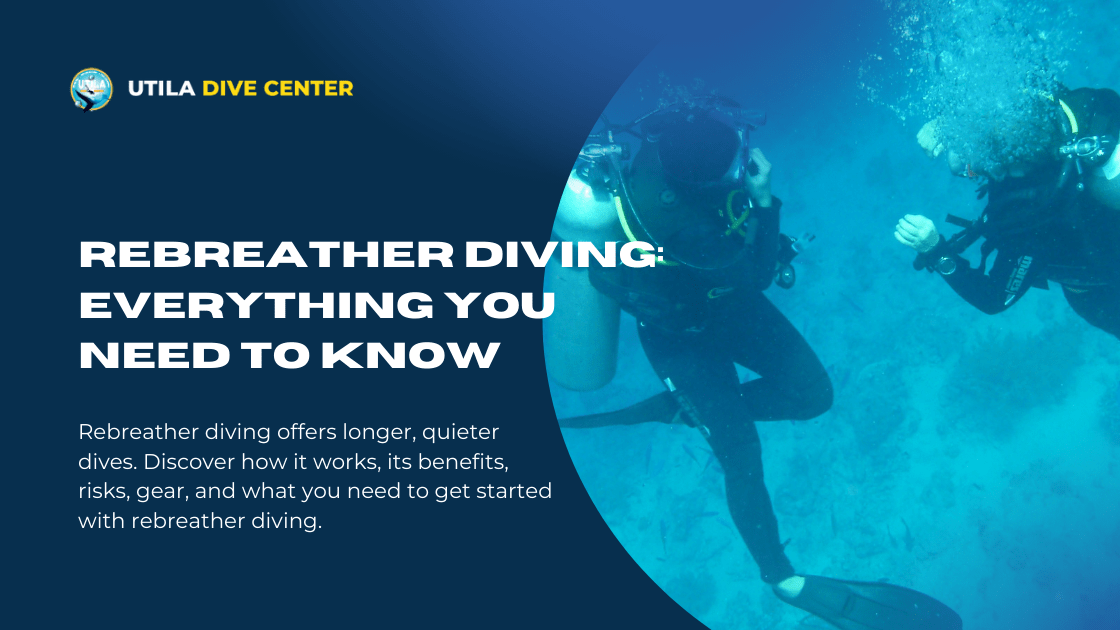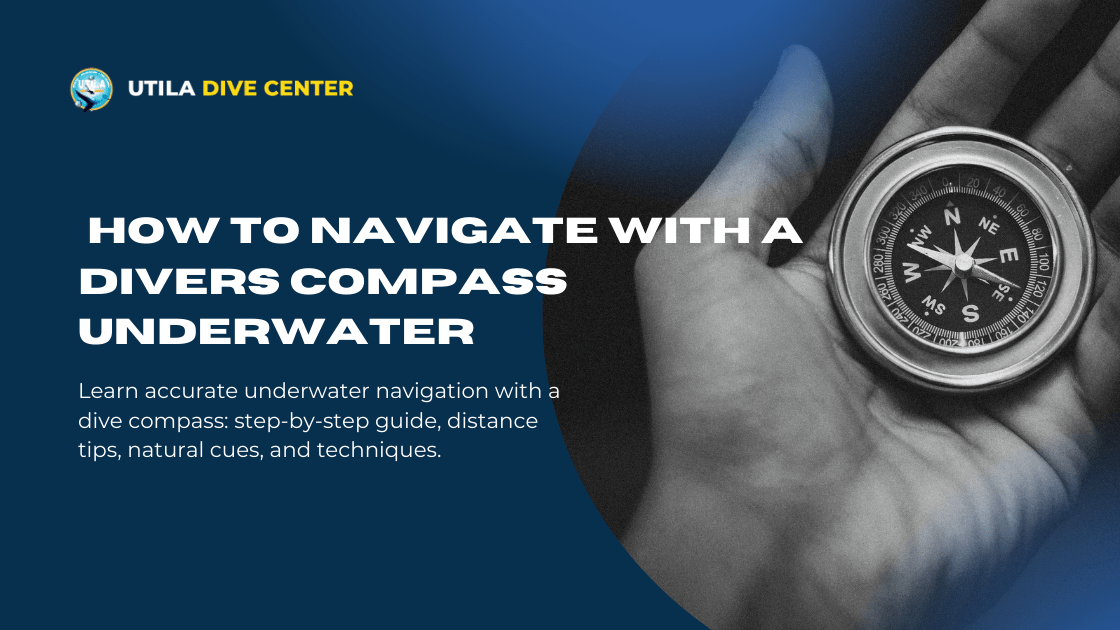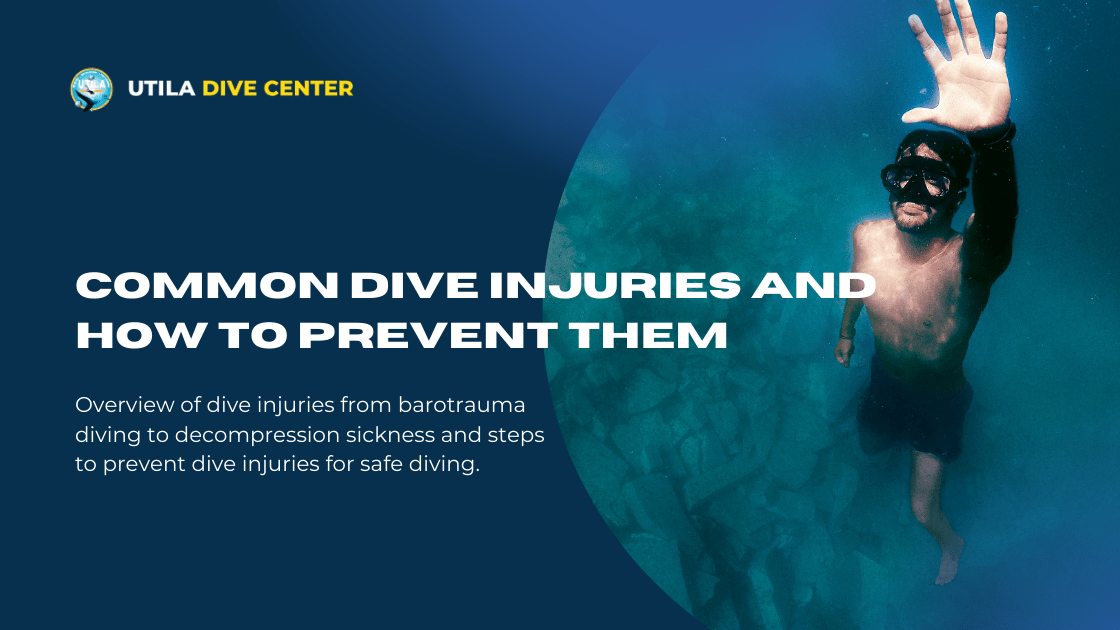
Mastering Breathing Techniques for Freediving
Breathing Techniques for Freediving | Utila Dive Center
By: Manny Lagos | Date: 2025-02-14T06:48:48.339Z
Thinking about trying freediving for the first time? Here at Utila Dive Centre, we can tell you one thing for sure – every single breath counts. From that deep inhale before you go underwater to that sweet recovery breath when you break back to the surface again, breathing isn’t just something you do– it’s the key to staying safe, steady, and confident. And guess what? You don’t have to be an expert to understand the breathing techniques for freediving. We’re here to guide you every step of the way.
AIDA freediving isn’t just about how strong or fit you physically are– it’s also about staying calm and in control of your mind. So let’s dive in and explore the basics: some easy-to-learn free dive breathing exercises and a few tips for practicing them.
Before you know it, you’ll be holding your breath like a pro!
Let’s begin.
Why Proper Breathing is Crucial for Freediving
Freediving isn’t just about holding your breath and hoping for the best– it’s about managing your body’s oxygen to make the most of every inhale.
Here’s why proper breathing is crucial for freediving:
- Increases oxygen intake and extends dive time:
With proper breathing techniques, you’ll inhale more oxygen and use it efficiently. This will give you some extra time underwater to soak in the beauty around you.
- Lowers heart rate:
A slow, steady heart rate simply means less oxygen consumption and more energy for your dive.
- Promotes relaxation:
Let’s be real– jumping into the ocean can feel a bit scary at first but proper breathing helps you relax, focus, and stay oriented underwater.
- Supports safe recovery:
Proper recovery breaths after resurfacing are just as important as the ones you take before diving into the ocean. They not only help prevent certain complications like shallow water blackouts but also help you reset for your next dive.
Types of Breathing Techniques for Freediving
When it comes to breathing techniques for freediving, there’s no “one-size-fits-all” approach. Each free dive breathing exercise serves a unique purpose and finding one that works best for you can make all the difference.
So let’s here’s a quick look at the different types of diving breathing techniques:
-
Segmented Breathing
Segmented breathing basically involves breaking your “inhale” into smaller sections. Think of this technique as the best way to make the most of your lung capacity in order to get ready for extended dives where every moment counts.
-
Recovery Breathing
After you come back up to the surface, recovery breathing should be your priority. It involves short, controlled exhales followed by quick, relaxed inhales to clear out carbon dioxide, restore oxygen, and prepare for the next dive.
-
Slow Breathing
As simple as it sounds, slow breathing is an amazing way to calm your mind and body before a dive. By taking slow, deep breaths, you can actually lower your heart rate, ease any nerves you might have, and give yourself a mental reset!
-
Diaphragmatic Breathing
Want to get your body and mind working in sync? Diaphragmatic breathing is the way to go. It involves using your diaphragm to take deep, full breaths that completely fill your lungs. The result? More oxygen, more relaxation, and a calmer mind.
-
Square Breathing
Square breathing is one of the most effective breathing techniques. Here’s how it works: you inhale for a count of 4, hold for 4, exhale for 4, and then hold again for 4. Sounds easy, right? This technique is especially great for calming those pre-dive nerves and helping you stay focused.
Recovery Breathing After Surfacing
Now, what happens after you come up from a dive? How do you help your body bounce back? How to prevent hypoxia? That’s where recovery breathing comes in.
Here’s how you can do it:
- Exhale gently:
No need to force it– just a short, brief exhale to clear out excess CO2 without burning up your oxygen reserves.
- Inhale deeply:
Take quick but deep breaths, and fill your lungs all the way to regulate the flow of oxygen in your body.
- Repeat and relax:
Keep this cycle going until your breathing feels steady and normal.
Pro tip: Don’t rush, just stay calm and take your time.
Tips for Practicing Free Dive Breathing Exercises
Like any other skill, mastering free dive breathing exercises takes a bit of time and practice– but here’s the good news: you can do it almost anywhere! Whether you’re just lounging on the couch or spending time near the water, these tips will help you build confidence and work on your technique.
Bring in Yoga and Meditation
Bringing in yoga and meditation is a complete game-changer when it comes to freediving. Certain yoga poses like cobra, child’s pose, or a seated forward bend aren’t just about flexibility– they actually help expand your lung capacity. And meditation? It’s perfect for teaching you how to stay calm under pressure.
Try Dry Training at Home
Can’t get to the water? No worries. Dry training is a simple yet safe way to work on your breathing techniques on land. Start with diaphragmatic breathing or square breathing while lying down, and gradually move on to static breath-holds.
Pro tip: Always train with a buddy or under supervision if possible.
Conclusion
Breathing techniques are the key to performing a successful freedive. By practicing breathing techniques like diaphragmatic breathing, segmented breathing, and recovery breathing, you’ll not only improve your diving performance but also feel more confident in the ocean.
At Utila Dive Center, we provide expert guidance and plenty of hands-on practice, to help you unlock your full potential.
So, why not join us here in the Caribbean and learn how to freedive?

Rebreather Diving: Everything You Need to Know
Rebreather diving offers longer, quieter dives. Discover how it works, its benefits, risks, gear, and what you need to get started with rebreather diving.
Read more
12 Rules of Scuba Diving All Divers Must Follow
We've curated a list of 12 rules of scuba diving to help you stay safe, protect marine life, and enjoy your underwater adventures with confidence.
Read more
How to Navigate With a Divers Compass Underwater
Learn accurate underwater navigation with a dive compass: step-by-step guide, distance tips, natural cues, and techniques.
Read more
Common Dive Injuries and How to Prevent Them
Overview of dive injuries from barotrauma diving to decompression sickness and steps to prevent dive injuries for safe diving.
Read more